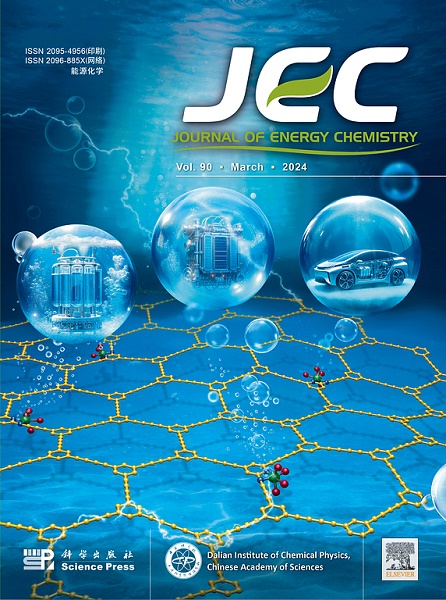Hydrogen generated from binders: An overlooked thermal runaway source in lithium-ion batteries
IF 13.1
1区 化学
Q1 Energy
引用次数: 0
Abstract
Anode binders undergo decomposition during thermal runaway, generating highly flammable and explosive hydrogen, which poses a significant threat to the safety of lithium-ion batteries. However, the binder due to its relatively small proportion is often overlooked in terms of its importance. This study elucidates the universal mechanism of hydrogen generation from the decomposition of binders and identifies the hydrogen-containing chemical bonds within the molecular structure of binders as the fundamental sources of hydrogen. The Fourier transform infrared spectroscopy of six commonly used binders reveals that five of them possess hydrogen-containing chemical bonds, indicating a potential for hydrogen generation, whereas the polytetrafluoroethylene binder lacks such bonds and cannot generate hydrogen. Differential scanning calorimetry is employed to compare the decomposition of these binders and their reaction with lithiated graphite. The results demonstrate that cyclic molecular structures not only enhance thermal stability but also increase the difficulty of hydrogen generation. Moreover, binders devoid of hydrogen atoms exhibit superior thermal stability and completely eliminate the risk of hydrogen generation. These findings provide critical insights into the molecular design of binders, offering promising strategies to mitigate or prevent hydrogen generation from binder decomposition and thereby substantially improve the safety of lithium-ion batteries.

粘合剂产生的氢:锂离子电池中被忽视的热失控源
阳极粘结剂在热失控过程中发生分解,产生高度易燃易爆的氢气,对锂离子电池的安全性构成重大威胁。然而,粘合剂由于其相对较小的比例,其重要性往往被忽视。本研究阐明了结合剂分解产氢的普遍机理,确定了结合剂分子结构内的含氢化学键是氢的基本来源。六种常用粘结剂的傅里叶变换红外光谱显示,其中五种具有含氢化学键,表明有可能产生氢,而聚四氟乙烯粘结剂缺乏这种化学键,不能产生氢。用差示扫描量热法比较了这些粘结剂的分解过程及其与锂化石墨的反应。结果表明,环状分子结构不仅提高了热稳定性,而且增加了制氢的难度。此外,不含氢原子的粘合剂表现出优越的热稳定性,完全消除了产氢的风险。这些发现为粘合剂的分子设计提供了重要的见解,为减轻或防止粘合剂分解产生氢气提供了有希望的策略,从而大大提高了锂离子电池的安全性。
本文章由计算机程序翻译,如有差异,请以英文原文为准。
求助全文
约1分钟内获得全文
求助全文
来源期刊

Journal of Energy Chemistry
CHEMISTRY, APPLIED-CHEMISTRY, PHYSICAL
CiteScore
19.10
自引率
8.40%
发文量
3631
审稿时长
15 days
期刊介绍:
The Journal of Energy Chemistry, the official publication of Science Press and the Dalian Institute of Chemical Physics, Chinese Academy of Sciences, serves as a platform for reporting creative research and innovative applications in energy chemistry. It mainly reports on creative researches and innovative applications of chemical conversions of fossil energy, carbon dioxide, electrochemical energy and hydrogen energy, as well as the conversions of biomass and solar energy related with chemical issues to promote academic exchanges in the field of energy chemistry and to accelerate the exploration, research and development of energy science and technologies.
This journal focuses on original research papers covering various topics within energy chemistry worldwide, including:
Optimized utilization of fossil energy
Hydrogen energy
Conversion and storage of electrochemical energy
Capture, storage, and chemical conversion of carbon dioxide
Materials and nanotechnologies for energy conversion and storage
Chemistry in biomass conversion
Chemistry in the utilization of solar energy
 求助内容:
求助内容: 应助结果提醒方式:
应助结果提醒方式:


